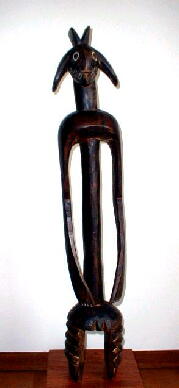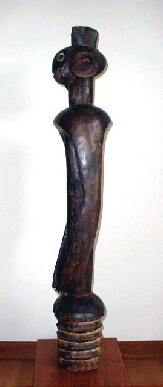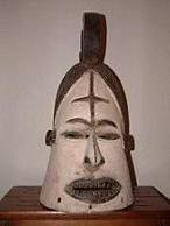|
In the Mumuye tribe, the rhythms and disciplines of daily life have been governed
by traditional ceremonies in which masks who symbolizes the spirit power of
ancestors played major parts, while wooden statues are placed in a sanctury or in
houses of men of influence, and have been used for the purpose of medical
treatment, rain-making rituals, curses, prayers for harvest etc.
Frankly speaking, I am not sure what kind of roles each wooden statue as shown in
this site played in the prayer of Mumuye tribe. Nevertheless, I can feel, for instance
from the statue D, a kind of strength which may accept a prayer of victory, and from the
ststue A, a aura of the vast and strong power of medical treatment or curse. On the
other hand, from the statue B, C and E, we feel an affection which will accept a
prayer for comfortable daily life. As for the statue F, though its face is quite small
and simplified, with eyes, nose and mouth which give an imprssion that they were
shaped by pricks of a gimlet, the statue has some sort of dignity which shows that
it was an object of a devout prayer.
Comparatively small (20~40cm) statues as J, K, L, M are often regarded as being
made to pay a tribute to the memory of the dead in each family.
|
|
































